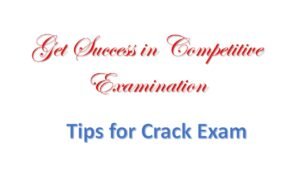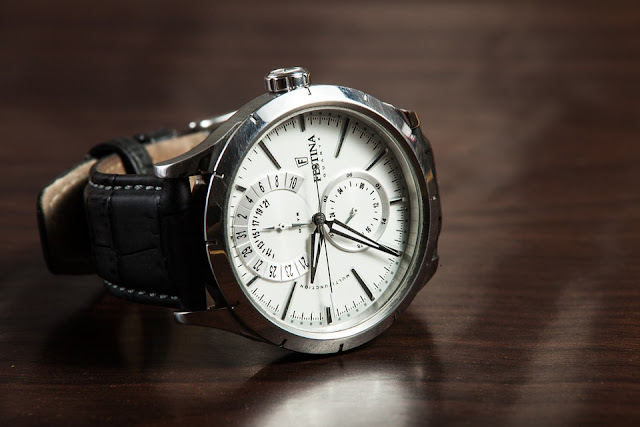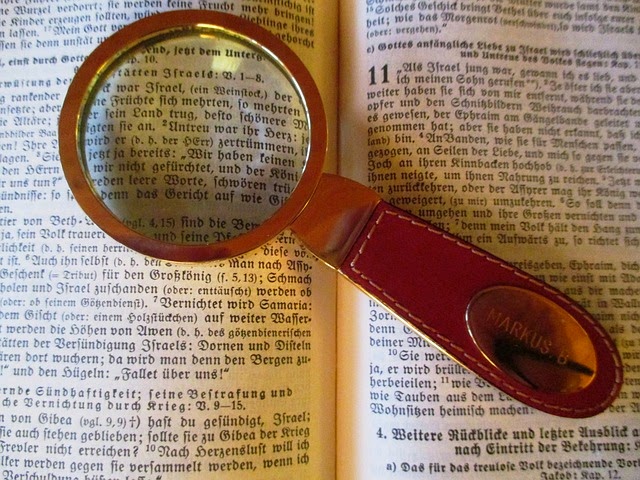Science Model Question
CLASS – X
SCIENCE (Theory)
Science MODEL QUESTION PAPER
CLASS – X
SCIENCE MODEL QUESTION (Theory)
Total No. of Questions : 18 + 9 = 27
Time : 2 ½ Hours Full Marks : 60
GENERAL INSTRUCTIONS:
1 अभ्यर्थियों को जहां तक संभव हो, अपने उत्तर अपने शब्दों में देने होंगे।
2 प्रश्न पत्र में दो समूह ‘ए’ और ‘बी’ हैं और दोनों समूहों के सभी प्रश्नों का उत्तर देना अनिवार्य है।
i) ग्रुप ‘ए’ (भौतिकी और रसायन विज्ञान) – 40 अंक
ii) ग्रुप ‘बी’ (जीव विज्ञान) – 20 अंक
3 . प्रत्येक प्रश्न के लिए आवंटित अंक उसके सामने मुद्रित होते हैं।
4.. दिए गए निर्देशों के संदर्भ में प्रश्नों के उत्तर लिखें।
5 . सभी रफ कार्य प्रश्न-सह-उत्तर पुस्तिका के अंतिम पृष्ठ पर करें और कहीं नहीं।
कुछ प्रश्नों के लिए 6 आंतरिक विकल्प दिये गये हैं। आपको ऐसे प्रश्नों में केवल एक ही विकल्प का प्रयास करना है।
7. ग्रुप ए के प्रश्न संख्या 1 से 6 और ग्रुप बी के प्रश्न संख्या 19 से 21 ‘अति लघु उत्तरीय’ प्रकार के प्रश्न हैं। इनमें से प्रत्येक प्रश्न का उत्तर एक शब्द या एक वाक्य में दें।
8. ग्रुप ए के प्रश्न संख्या 7 से 12 और ग्रुप बी के प्रश्न संख्या 22 से 24 ‘लघु उत्तर-11’ प्रकार के प्रश्न हैं। इनमें से प्रत्येक प्रश्न का उत्तर लगभग 30 से 40 शब्दों में दें।
9. ग्रुप ए के प्रश्न संख्या 13 से 16 और ग्रुप बी के प्रश्न संख्या 25 और 26 ‘लघु उत्तर-I’ प्रकार के प्रश्न हैं। इनमें से प्रत्येक प्रश्न का उत्तर लगभग 40 से 50 शब्दों में दें।
10. ग्रुप ए के प्रश्न संख्या 17 और 18 और ग्रुप बी के प्रश्न संख्या 27 ‘दीर्घ उत्तर’ प्रकार के प्रश्न हैं। इनमें से प्रत्येक प्रश्न का उत्तर 70 शब्दों में दें।
11. जहां भी आवश्यक हो साफ-सुथरे चित्र बनाएं।
2 प्रश्न पत्र में दो समूह ‘ए’ और ‘बी’ हैं और दोनों समूहों के सभी प्रश्नों का उत्तर देना अनिवार्य है।
i) ग्रुप ‘ए’ (भौतिकी और रसायन विज्ञान) – 40 अंक
ii) ग्रुप ‘बी’ (जीव विज्ञान) – 20 अंक
3 . प्रत्येक प्रश्न के लिए आवंटित अंक उसके सामने मुद्रित होते हैं।
4.. दिए गए निर्देशों के संदर्भ में प्रश्नों के उत्तर लिखें।
5 . सभी रफ कार्य प्रश्न-सह-उत्तर पुस्तिका के अंतिम पृष्ठ पर करें और कहीं नहीं।
कुछ प्रश्नों के लिए 6 आंतरिक विकल्प दिये गये हैं। आपको ऐसे प्रश्नों में केवल एक ही विकल्प का प्रयास करना है।
7. ग्रुप ए के प्रश्न संख्या 1 से 6 और ग्रुप बी के प्रश्न संख्या 19 से 21 ‘अति लघु उत्तरीय’ प्रकार के प्रश्न हैं। इनमें से प्रत्येक प्रश्न का उत्तर एक शब्द या एक वाक्य में दें।
8. ग्रुप ए के प्रश्न संख्या 7 से 12 और ग्रुप बी के प्रश्न संख्या 22 से 24 ‘लघु उत्तर-11’ प्रकार के प्रश्न हैं। इनमें से प्रत्येक प्रश्न का उत्तर लगभग 30 से 40 शब्दों में दें।
9. ग्रुप ए के प्रश्न संख्या 13 से 16 और ग्रुप बी के प्रश्न संख्या 25 और 26 ‘लघु उत्तर-I’ प्रकार के प्रश्न हैं। इनमें से प्रत्येक प्रश्न का उत्तर लगभग 40 से 50 शब्दों में दें।
10. ग्रुप ए के प्रश्न संख्या 17 और 18 और ग्रुप बी के प्रश्न संख्या 27 ‘दीर्घ उत्तर’ प्रकार के प्रश्न हैं। इनमें से प्रत्येक प्रश्न का उत्तर 70 शब्दों में दें।
11. जहां भी आवश्यक हो साफ-सुथरे चित्र बनाएं।
Science Model Question Group A (Physics & Chemistry)
1. लेंस की शक्ति की SI इकाई क्या है?
2.साधारण नमक का रासायनिक सूत्र लिखिए।
3. विभवान्तर किस उपकरण से मापा जाता है?
4. तांबा और जस्ता की मिश्रधातु को क्या कहते हैं?
5. इलेक्ट्रिक सर्किट को शॉर्ट सर्किट और ओवरलोडिंग से होने वाले नुकसान से बचाने के लिए सबसे महत्वपूर्ण उपकरण कौन सा है?
6. HCHO में उपस्थित क्रियात्मक समूह लिखिए।
7. एक उत्तल दर्पण की फोकस दूरी ज्ञात कीजिए जिसकी वक्रता त्रिज्या 32 सेमी है।
8. तांबे के लाल-भूरे पाउडर को चित्र में दिखाए अनुसार गर्म किया जाता है। आकृति का लेबल (1) और (2)।
9. एक वस्तु को अवतल दर्पण के सामने वक्रता केंद्र C से परे रखा गया है। इस प्रकार बने प्रतिबिम्ब का किरण आरेख खींचिए।
10. पीएच स्केल क्या है? किसी उदासीन विलयन का pH मान लिखिए।
11. दो ऊर्जा स्रोतों के नाम बताइए जिन्हें आप संपूर्ण मानते हैं। अपनी पसंद के कारण बताएं.
12. एक तत्व X आवर्त सारणी के समूह 1 और तीसरे आवर्त में है:
(ए) एक्स – धातु या अधातु क्या है?
(बी) इसकी संयोजकता क्या है?
13. साफ़ आकाश का रंग नीला क्यों होता है?
या, बताएं कि ग्रह क्यों नहीं टिमटिमाते हैं?
14 निम्नलिखित के लिए संतुलित रासायनिक समीकरण लिखें और प्रत्येक मामले में प्रतिक्रिया के प्रकार की पहचान करें।
2.साधारण नमक का रासायनिक सूत्र लिखिए।
3. विभवान्तर किस उपकरण से मापा जाता है?
4. तांबा और जस्ता की मिश्रधातु को क्या कहते हैं?
5. इलेक्ट्रिक सर्किट को शॉर्ट सर्किट और ओवरलोडिंग से होने वाले नुकसान से बचाने के लिए सबसे महत्वपूर्ण उपकरण कौन सा है?
6. HCHO में उपस्थित क्रियात्मक समूह लिखिए।
7. एक उत्तल दर्पण की फोकस दूरी ज्ञात कीजिए जिसकी वक्रता त्रिज्या 32 सेमी है।
8. तांबे के लाल-भूरे पाउडर को चित्र में दिखाए अनुसार गर्म किया जाता है। आकृति का लेबल (1) और (2)।
9. एक वस्तु को अवतल दर्पण के सामने वक्रता केंद्र C से परे रखा गया है। इस प्रकार बने प्रतिबिम्ब का किरण आरेख खींचिए।
10. पीएच स्केल क्या है? किसी उदासीन विलयन का pH मान लिखिए।
11. दो ऊर्जा स्रोतों के नाम बताइए जिन्हें आप संपूर्ण मानते हैं। अपनी पसंद के कारण बताएं.
12. एक तत्व X आवर्त सारणी के समूह 1 और तीसरे आवर्त में है:
(ए) एक्स – धातु या अधातु क्या है?
(बी) इसकी संयोजकता क्या है?
13. साफ़ आकाश का रंग नीला क्यों होता है?
या, बताएं कि ग्रह क्यों नहीं टिमटिमाते हैं?
14 निम्नलिखित के लिए संतुलित रासायनिक समीकरण लिखें और प्रत्येक मामले में प्रतिक्रिया के प्रकार की पहचान करें।
(a)Potassium bromide (aq) + Barium iodide (aq)→ Potassium iodide (aq) + Barium bromide(s)
(b) Zinc carbonate (s)→ Zinc oxide (s) + Carbon dioxide (g)
(c) Hydrogen (g) + Chlorine (g)→ Hydrogen chloride (g)
(d) Magnesium (s) + Hydrochloric acid (aq) → Magnesium chloride (aq) + Hydrogen (g)
15. घरेलू वायरिंग में प्रयुक्त तीन तारों के नाम और रंग लिखिए।
16. निम्नलिखित यौगिकों के लिए संरचनात्मक सूत्र बनाएं:
i) ब्रोमोप्रोपेन
ii) प्रोपेनोल
iii) प्रोपीन
17 (ए) 2 ओम 3 ओम और 6 ओम प्रतिरोध वाले तीन प्रतिरोधकों को 4 ओम और 1 ओम का कुल प्रतिरोध देने के लिए कैसे जोड़ा जा सकता है?
(बी) प्रतिरोध क्या है? इसका SI मात्रक लिखिए।
या ,
विद्युत जनरेटर क्या है? इसका सिद्धांत लिखिए। ए.सी. जनरेटर का नामांकित चित्र बनाइये।
18. एक कार्बनिक यौगिक X का उपयोग व्यापक रूप से अचार में परिरक्षक के रूप में किया जाता है और इसका आणविक सूत्र C2H4O2 है। यह यौगिक इथेनॉल के साथ प्रतिक्रिया करके एक मीठी गंध वाला यौगिक Y बनाता है।
(ए) यौगिक एक्स की पहचान करें।
(बी) यौगिक Y बनाने के लिए इथेनॉल के साथ इसकी प्रतिक्रिया के लिए रासायनिक समीकरण लिखें।
(सी) हम यौगिक X को यौगिक Y से वापस कैसे प्राप्त कर सकते हैं?
(डी) प्रक्रिया का नाम बताएं और संबंधित समीकरण लिखें।
16. निम्नलिखित यौगिकों के लिए संरचनात्मक सूत्र बनाएं:
i) ब्रोमोप्रोपेन
ii) प्रोपेनोल
iii) प्रोपीन
17 (ए) 2 ओम 3 ओम और 6 ओम प्रतिरोध वाले तीन प्रतिरोधकों को 4 ओम और 1 ओम का कुल प्रतिरोध देने के लिए कैसे जोड़ा जा सकता है?
(बी) प्रतिरोध क्या है? इसका SI मात्रक लिखिए।
या ,
विद्युत जनरेटर क्या है? इसका सिद्धांत लिखिए। ए.सी. जनरेटर का नामांकित चित्र बनाइये।
18. एक कार्बनिक यौगिक X का उपयोग व्यापक रूप से अचार में परिरक्षक के रूप में किया जाता है और इसका आणविक सूत्र C2H4O2 है। यह यौगिक इथेनॉल के साथ प्रतिक्रिया करके एक मीठी गंध वाला यौगिक Y बनाता है।
(ए) यौगिक एक्स की पहचान करें।
(बी) यौगिक Y बनाने के लिए इथेनॉल के साथ इसकी प्रतिक्रिया के लिए रासायनिक समीकरण लिखें।
(सी) हम यौगिक X को यौगिक Y से वापस कैसे प्राप्त कर सकते हैं?
(डी) प्रक्रिया का नाम बताएं और संबंधित समीकरण लिखें।
Science Model Question Group B (Biology)
19 तंत्रिका तंत्र की संरचनात्मक एवं कार्यात्मक इकाई क्या है?
20 अलैंगिक प्रजनन की किस प्रक्रिया के माध्यम से यीस्ट कोशिका प्रजनन करती है?
21. जल संरक्षण की दो पारंपरिक विधियों का उल्लेख करें।
22. प्रतिवर्ती चाप क्या है? इसके घटक क्या हैं?
23. अलैंगिक प्रजनन की तुलना में लैंगिक प्रजनन के क्या फायदे हैं?
24. ओजोन परत के क्षय के क्या बुरे प्रभाव हो सकते हैं?
25जीवाश्म क्या हैं? वे हमें विकास की प्रक्रिया के बारे में क्या बताते हैं?
26. हमारे संसाधनों के सतत उपयोग की दिशा में आगे बढ़ते हुए आप अपनी जीवन-शैली में क्या बदलाव शामिल करेंगे?
27.(ए) हमारे शरीर में लिम्फ का क्या कार्य है?
(बी) मानव हृदय का एक साफ चित्र बनाएं और मुख्य भागों को नामांकित करें।
या
(ए) आनुवंशिकी के दृष्टिकोण से जीवित बाघों की कम संख्या चिंता का कारण क्यों है?
(बी) मनुष्य में बच्चे का लिंग कैसे निर्धारित होता है?
20 अलैंगिक प्रजनन की किस प्रक्रिया के माध्यम से यीस्ट कोशिका प्रजनन करती है?
21. जल संरक्षण की दो पारंपरिक विधियों का उल्लेख करें।
22. प्रतिवर्ती चाप क्या है? इसके घटक क्या हैं?
23. अलैंगिक प्रजनन की तुलना में लैंगिक प्रजनन के क्या फायदे हैं?
24. ओजोन परत के क्षय के क्या बुरे प्रभाव हो सकते हैं?
25जीवाश्म क्या हैं? वे हमें विकास की प्रक्रिया के बारे में क्या बताते हैं?
26. हमारे संसाधनों के सतत उपयोग की दिशा में आगे बढ़ते हुए आप अपनी जीवन-शैली में क्या बदलाव शामिल करेंगे?
27.(ए) हमारे शरीर में लिम्फ का क्या कार्य है?
(बी) मानव हृदय का एक साफ चित्र बनाएं और मुख्य भागों को नामांकित करें।
या
(ए) आनुवंशिकी के दृष्टिकोण से जीवित बाघों की कम संख्या चिंता का कारण क्यों है?
(बी) मनुष्य में बच्चे का लिंग कैसे निर्धारित होता है?
Was this helpful?
0 / 0





